2016 BFI London Film Festival Highlights
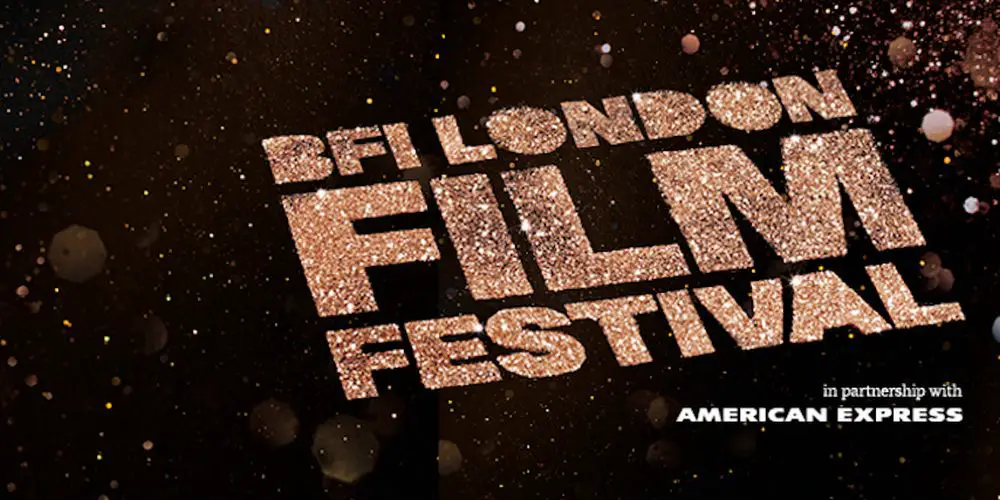
PhD Student in Culture, Film and Media at the University…
The 60th annual London Film Festival has just drawn to a close, having shown 245 feature films from a number of different countries covering a plethora of genres. Not only that, but it has been a groundbreaking year with the British Film Institute (BFI) hosting a number of talks concerning diversity in the British film industry, while using the festival to announce the launch of its Black Star programme. It’s designed to celebrate and showcase the work of black film and television-makers in a series of talks, screenings and exhibitions running until the end of the year through a variety of theatrical and online platforms.
Appropriately, yet shockingly, director Amma Asante has made history in that she has become the first female director of colour to headline the festival with her latest work A United Kingdom, which stars David Oyelowo and Rosamund Pike, and has so far received much acclaim. What is more, the London Film Festival’s awards ceremony was positively on message with artist and filmmaker Steve McQueen receiving a BFI Fellowship, Kelly Reichardt‘s Certain Women taking home the Best Film award, Mehrdad Oskouei‘s Starless Dreams winning Best Documentary, and 9 Days: From My Window in Aleppo – penned by Syrian photographer Issa Touma – announced as Best Short Film.
Nevertheless, there is of course much still to be done in terms of creating more diverse filmmaking in Britain and beyond. The upcoming Black Star report will provide statistical weight to support discussions and opinions, such as those of actor/writer/director Noel Clarke and Film4’s Creative Diversity Manager Ramy El-Bagamy. Both highlighted the need to widen access to opportunities, and ensure that as much work is done to improve diversity in terms of addressing issues regarding social class as there is to improve broader representations of race, ethnicity, gender, sexuality, and disability. In fact, Clarke made it clear that he believed the absence of his Hood trilogy from the Black Star programme and the lack of discussion around their financial and critical success was driven by a disdain and disinterest in their depictions of working-class characters aimed at working-class audiences.
Clearly, this was a very interesting festival indeed. Quite rightly much will be written about these discussions and debates, and the Black Star statistical report is to be eagerly awaited.
However, this article is for the discussion of the films of the London Film Festival (at least, the modest selection I managed to see!). The films below are a mixture of restored treasures, exciting (and spooky) international delights, biting satire, and bold but flawed features. With any luck, they will provide a varied snapshot of what was on offer that will hopefully have a bit of something for everyone.
I must warn you, though, that these films will be somewhat off the beaten track. If you want to read about the likes of Free Fire, Manchester by the Sea or La La Land (as you rightly should), unfortunately you will have to look elsewhere [ed. Instead, what follows is a collection of films comprising of the surreal, the provocative, and the poetic.
So, without further ado…
One-Eyed Jacks (1961, Marlon Brando)
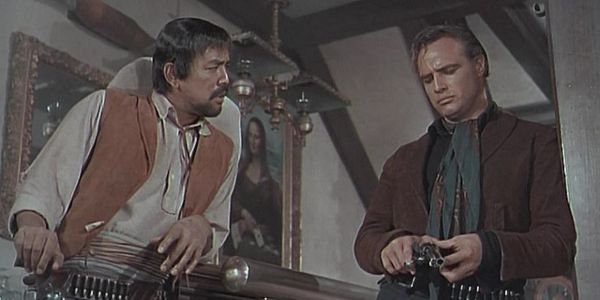
The only film to be directed by actor Marlon Brando, this partly improvised western tells a tale of romance and revenge that flits between the terrains of Mexico and California. Originally intended to be written by Sam Peckinpah and directed by Stanley Kubrick, this new 4K restoration comes courtesy of Universal Studios and the FilmFoundation, as well as executive producers Martin Scorsese and Steven Spielberg.
The story begins when Rio (Brando) and Daddy Longworth (a terrific Karl Malden) rob a bank in Mexico and find themselves surrounded in the desert. Rio encourages Daddy to take their lone horse and ride for help in a nearby town while he holds their position. However, Daddy is consumed by greed and cowardice, making off with the loot and leaving Rio at the mercy of the law. Five years later, Rio escapes from prison looking for revenge, only to learn that Daddy is now a respectable man – a popular sheriff with a loving wife Maria (Katy Jurado) and stepdaughter Louisa (Pina Pellicer). When Rio falls in love with Louisa, he must decide whether he can find it in his heart to forgive Daddy and start a new life with her, or give in to his hatred and claim his revenge.
The restoration is beautifully done, and the film itself contains some lovely images courtesy of cinematographer Charles Lang. Moreover, Malden, Jurado and Pellicer all give strong performances, and when Brando can be bothered, he does too. There are some bold and interesting elements to the film, such as the almost romantic relationship between Rio and Daddy, and the decision to partially perform in the Spanish language without subtitles. But overall the lack of structure and jarring changes in tone make One-Eyed Jacks a bit of a mixed bag.
You Were Never Lovelier (1942, William A. Seiter)
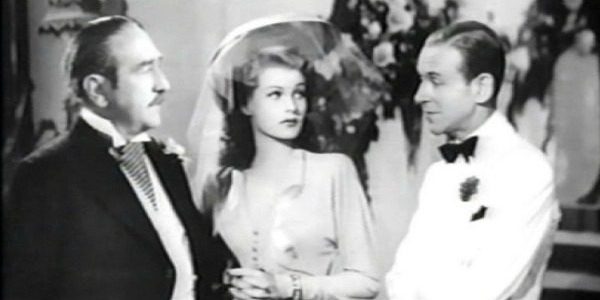
Fred Astaire and Rita Hayworth. Need there be any other reason to watch a film?
Part-time dancer and full-time gambler Robert Davis (Astaire) finds himself in need of funds for horses. He therefore decides to work for Eduardo Acuna (Adolphe Menjou) at his hotel in Buenos Aires. Little does he realise, however, that Acuna has no intention of employing him, but is instead completely obsessed with finding a husband for his beautiful daughter Maria (Hayworth). If only he could find a suitor…
Another 4K restoration (this time by Park Circus and Sony Pictures), You Were Never Lovelier is an exquisite and delightful romp through all the charms of simplistic plots and underlying conservatism and sexism that Old Hollywood could offer.
Despite these flaws, this would certainly be among my picks of the festival. The choreography is stunning, the comedy is the perfect balance of sharp and bawdy, and the chemistry between Astaire and Hayworth is present not just through their dance routines. It is a truly romantic film that swell the heart of the most curmudgeonly grump, whether they are used to Astaire‘s toe-tipping antics or not.
Daughters of the Dust (1991, Julie Dash)
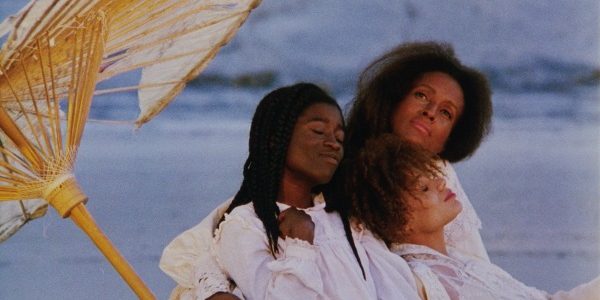
Julie Dash‘s 1991 film Daughters of the Dust has been newly restored by the Cohen Film Collection in Burbank, California.
Set in 1902, Dash‘s lyrical film tells the story of multiple generations of the Peazant family, centred around the experiences of the Gullah women who are its very core. Matriarch Nana Peazant (Cora Lee Day) tries to keep the family true to the traditional ways of their African ancestors, encouraging a simple but fulfilled life. Her granddaughters Hagaar (Kaycee Moore) and Viola (Cheryl Lynn Bruce) are keen to move the family to the mainland to convert to Christianity and join the rapidly growing modern world. Meanwhile, the pregnant Eula (Alva Rogers) – who was raped by a white man on the mainland – and her husband Eli (Adisa Anderson) are caught in the middle of the generational shifts and rifts.
The structure and narrative of the film is much more like a collage and a poem than a traditional linear screenplay, which may be an issue for some viewers. I, however, found it incredibly moving, and think that one of the great strengths of the film is its lyricism and heavily researched embodiment of its time, place and varying attitudes. It is an intelligent, measured and masterfully handled portrayal of the eternal divide between tradition and progress, and the struggle to maintain the identity of an entire culture that speaks volumes about the historical significance of African, American and African-American identity not only in the time of the film’s setting, but also at the time of its release and even its current re-release.
I found it reminiscent of works as diverse as the plays of the late great Brian Friel (especially Translations and Dancing at Lughnasa, which were concerned with Irish culture) and Justin Simien‘s terrific reflection on contemporary racial politics and black identity Dear White People. Nonetheless, such comparisons are unnecessary and unhelpful when the film is so very potent and individual in its own right.
What’s in the Darkness (Hei chu you shen me, 2015, Wang Yichun)
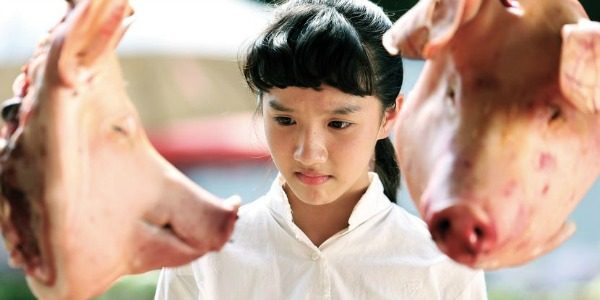
Writer/director Wang Yichun‘s feature debut was among the highlights of the London Film Festival for me. An intricate and astute coming-of-age drama blended with all the hallmarks of a gripping thriller, it is a film that is as unsettling as it is moving and surprisingly comic.
Set in 1991, the story follows a young girl as she becomes a woman amidst the backdrop of a series of bizarre murders in her small provincial town. Her father is a local detective, but lacks authority in both his household and his workplace, where he is seen as over-keen and under-skilled. Qu Jing must navigate her inherently fraught, confusing and misogynistic surroundings, while the killer remains on the loose, and everyone around her seems determined that she either fit into their ideal of what a woman should be or remain a girl forever more.
Some may find its ending rather sudden and inconclusive, but I think that is precisely the point, and that its final image suits the title perfectly.
A subtle and understated gem, full of strong performances, tense editing and camerawork, and clear and powerful direction, What’s in the Darkness is a fascinating and beguiling watch.
Lake Bodom (2016, Taneli Mustonen)

Apparently the first Finnish horror film to have been released in ten years, Lake Bodom goes for the jugular by crafting its story around a real life unsolved murder case from 1960 (which took place at the titular lake).
Teenagers Atte (Santeri Helinheimo Mäntylä) and Elias (Mikael Gabriel) have arranged to go on a relaxing weekend break at Lake Bodom with their friends Nora (Mimosa Willamo) and Ida (Nelly Hirst-Gee). However, Atte is obsessed with the historical murder case and hopes to use their visit as a chance to reconstruct the events of that night, while Elias is obsessed with Ida, who is recovering from the shock of a recent traumatic event. As the night draws in, it becomes clear that the group might not be alone in the woods, and also that the two boys are not the only ones with ulterior motives…
Though this is hardly a perfect film, it is sufficiently fun, daring and thrilling to get past its clichéd plots and clumsy twists and dialogue. Considering how difficult it was to secure funding for the film in Finland, and its relatively small final budget, the crew have managed to do a terrific job indeed. Principally, Daniel Lindholm‘s cinematography must be praised for its ever-present beauty and his own ever-invisible presence. He manages to create a distinctive look for the film that gets the best out of its locations and yet only adds to the superb atmosphere created by the cast and their director rather than distracting from it. There is also a great car chase sequence that gets plenty of bang from very little buck.
The cast fully commit themselves to the film and bring a real sense of urgency to the proceedings. Willamo is particularly impressive as the uncompromising and fiercely loyal Nora, who is at times incredibly sympathetic and at others incredibly unnerving. She manages to handle the elasticity of the plot with admirable verve and dedication, and gives a performance that never feels strained or forced.
This is a rough and ready film that is similar to the flawed but imitable work of Adam Wingard on the equal schlocky You’re Next. Indeed, director Taneli Mustonen is clearly someone with talent and enthusiasm, and it will be very interesting to see what he does next.
Lake Bodom has already done well in its home country, and I wish it all the best elsewhere.
Hema Hema: Sing Me a Song While I Wait (2016, Khyentse Norbu)
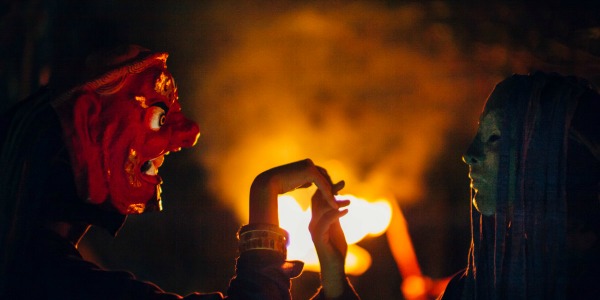
Directed by the Tibetan lama Khyentse Norbu, this crowd-funded Bhutanese drama, Hema Hema: Sing Me a Song While I Wait, is a truly singular cinematic experience. Set in the rainforests of Bhutan, it centres around a fictional festival that occurs every 24 years in which participants wear masks and celebrate the freedom (and danger) of anonymity, whilst also hoping to experience a sense of self-discovery. Appropriately, the actors in the film are masked for approximately 90% of its running time, allowing for some incredibly stark imagery, and a very unique performance style.
As well as its narrative, the film explores local traditional folklore alongside more commonly cinematic themes such as the netherworld between life and death, redemption, and sin. All of this is done through a Buddhist lens, giving the film an increased potency, as well as a more unusual tone.
Some may find the ending somewhat problematic, and the decision to play a sentimental behind the scenes reel that contains some gags during the end credits may raise a few eyebrows, but I found Hema Hema a haunting, enchanting and reflective journey that had plenty to offer its audience regardless of how familiar they are with Bhutanese culture or religion.
In many ways, it is an imperfect and indescribable work, but surely that makes it all the more appealing?
Chi-Raq (2015, Spike Lee)
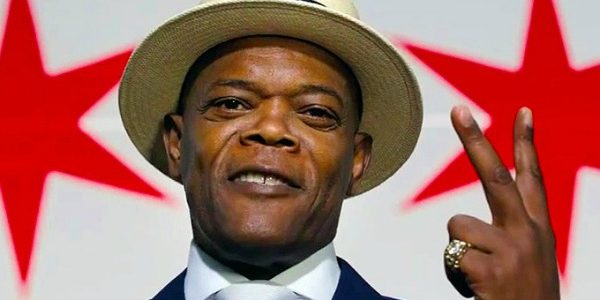
Despite having already achieved acclaim and controversy in America upon its release last year, Spike Lee‘s latest offering, Chi-Raq, has only just arrived in UK cinemas (though its nationwide distribution will not begin until December). I can assure you, however, that it is worth the wait.
Set in Chicago amidst rising gun crime, working-class disillusionment and marked gentrification and ghettoisation, Chi-Raq is a suitably angry and rousing political rallying cry that combines social commentary with cartoonish satire, verse performance, and rap music, all based around a new adaptation of an ancient Greek stage comedy.
Inspired by Aristophanes‘s “Lysistrata“, Lee‘s film follows the efforts of the women of Chicago to reform the violent ways of their male spouses involved in the local gang culture. Led by Lysistrata (Teyonah Parris) and Helen Worthy (Angela Bassett), the women aim to create a truce between rival gang leaders Demetrius “Chi-Raq” Dupree (Nick Cannon) and Sean “Cyclops” Andrews (Wesley Snipes). They also want to push the mayor (D. B. Sweeney) to initiate investment in employment and gun control that will attract the disenfranchised away from crime. How do they plan to do this? By calling a sex strike, of course.
There is so much to enjoy in this movie. Whether it is Samuel L. Jackson‘s deliciously hammy turn as the Greek Chorus character Dolmedes or the broad comedy and fiery politics that will stir the most apathetic of audience members. The verse may not always scan and some of the narrative may be fragmented, but this is an impassioned, furious and well-informed piece of satire with clever casting decisions, strong performances (particularly from Bassett and Parris), great music, colourful costume design, and stark imagery.
It is an inventive and visceral film that deserves to be seen on the big screen with its message shouted from the rooftops.
Una (2016, Benedict Andrews)

Adapted by David Harrower from his stage play “Blackbird“, Benedict Andrews‘s cinematic directorial debut Una is a challenging drama concerning a troubled past between a young woman (Rooney Mara) and an older man (Ben Mendelsohn).
For the sake of dramatic impact, I will not reveal any more about the plot, but for anyone familiar with the play and its characters, this incarnation will bring a mixture of intrigue, consolidation and frustration. Despite having an effective atmosphere and two excellent lead performances, the complexities and wonderfully simplistic structure of Harrower‘s play fail to translate to the screen.
While there are some very arresting moments in the film, and it is admirable to want to move away from the play and build on its narrative and characters, I found the execution of these intentions somewhat lacking, especially considering that most of the opening out of the play (which is set in one room and only has two characters) involved a beleaguered and wasted Tobias Menzies following Mendelsohn round the various sets.
Ultimately, Una is a solid but slightly underwhelming companion to its bolder and more challenging source material. Having said that, it may be better to judge the film on its own merits as a single entity with little or no reference to or knowledge of the play.
The Void (2016, Jeremy Gillespie, Steven Kostanski)
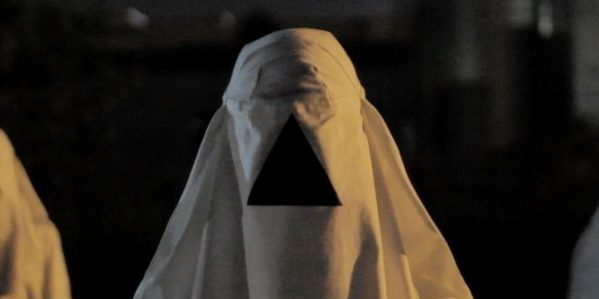
Low-budget Canadian horror The Void finds its characters trapped in a run-down hospital by a sinisterly-attired cult that refuse to let them leave the building. After a while, however, it soon becomes apparent that their real problems are what’s inside when vile and malevolent outbursts of posthumous physical transformation begin to pick off the group one by one.
There are aspects of The Void that should be commended. For instance, despite its low budget, it champions the use of special prosthetic make-up effects, brilliantly executed by artists Nicola Bendrey, Zane Knisely, and Michael J. Walsh, at a time when it is sadly increasingly rare for filmmakers to bother with such things. What is more, the screenplay boldly aims to throw its audience into as much confusion and terror as its characters, with the plot being fed to them slowly on a drip.
Unfortunately, though it tries harder than any film I’ve seen recently to be interesting, The Void is nauseatingly dull. The performances are either wooden (Kenneth Welsh) or over-the-top (Aaron Paul look-a-like Aaron Poole), the dialogue is clunky and preposterous, the pacing is completely off, the plot is overly convoluted, and the twists and turns are too slowly eked out, allowing for more tedium than tension. Its 85 minute run time feels painstakingly slow after the first 20 minutes when you realise things aren’t going to get any better. Instead of creating a refreshing chaotic atmosphere, the narrative is just a mess, and it is hard to care about what is going on.
In the end, it is disappointingly muddled, irritatingly melodramatic, surprisingly televisual, and uninterestingly gory, which is a real shame given that its central costume design is so wonderfully simple and creepy. If only its writer/directors hadn’t tried so hard with it all.
So there it is! My rundown round-up of the BFI London Film Festival 2016.
Were you there? What did you? Did I get these films wrong? Let me know in the comments below.
Does content like this matter to you?
Become a Member and support film journalism. Unlock access to all of Film Inquiry`s great articles. Join a community of like-minded readers who are passionate about cinema - get access to our private members Network, give back to independent filmmakers, and more.
PhD Student in Culture, Film and Media at the University of Nottingham Blogger at [email protected]













